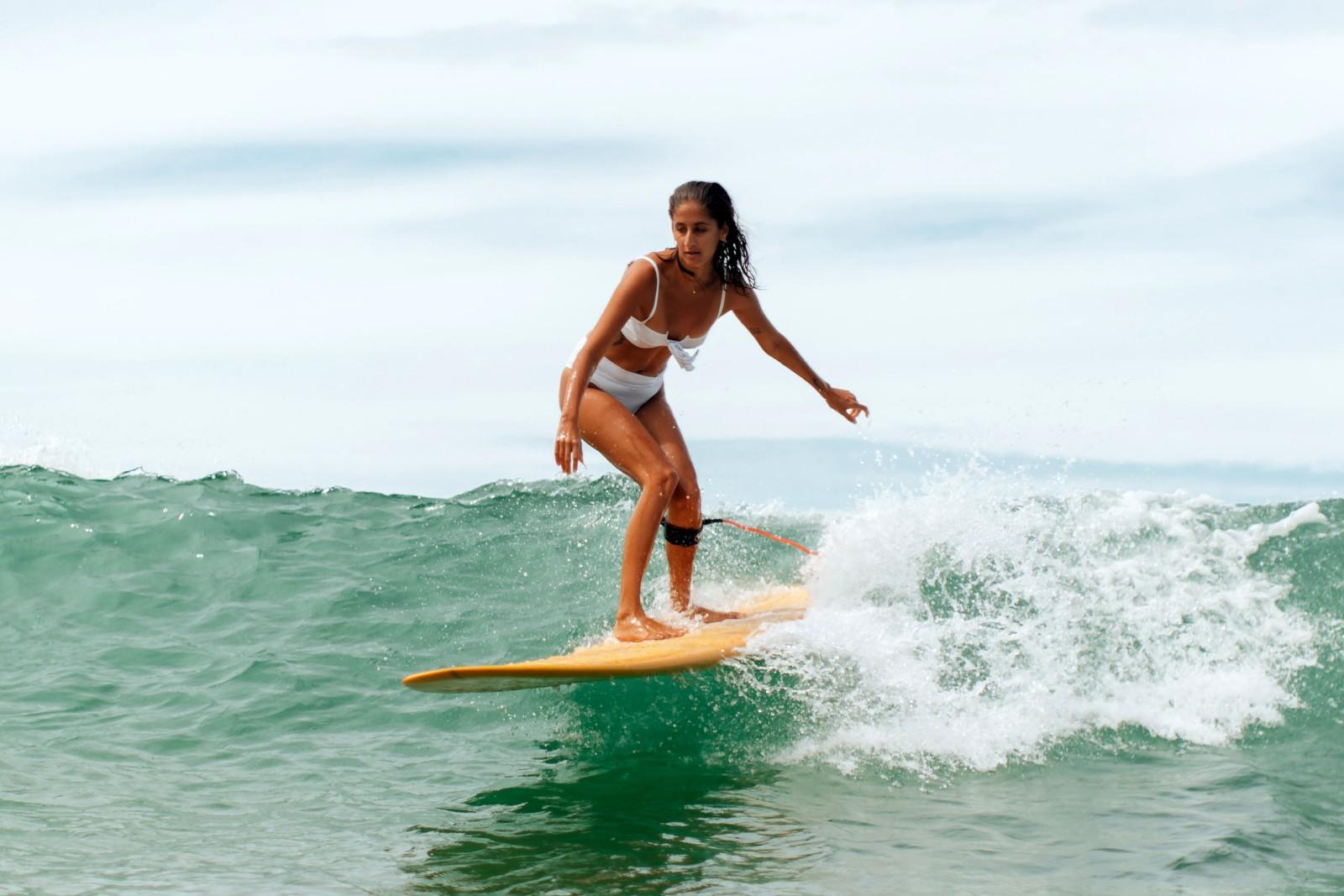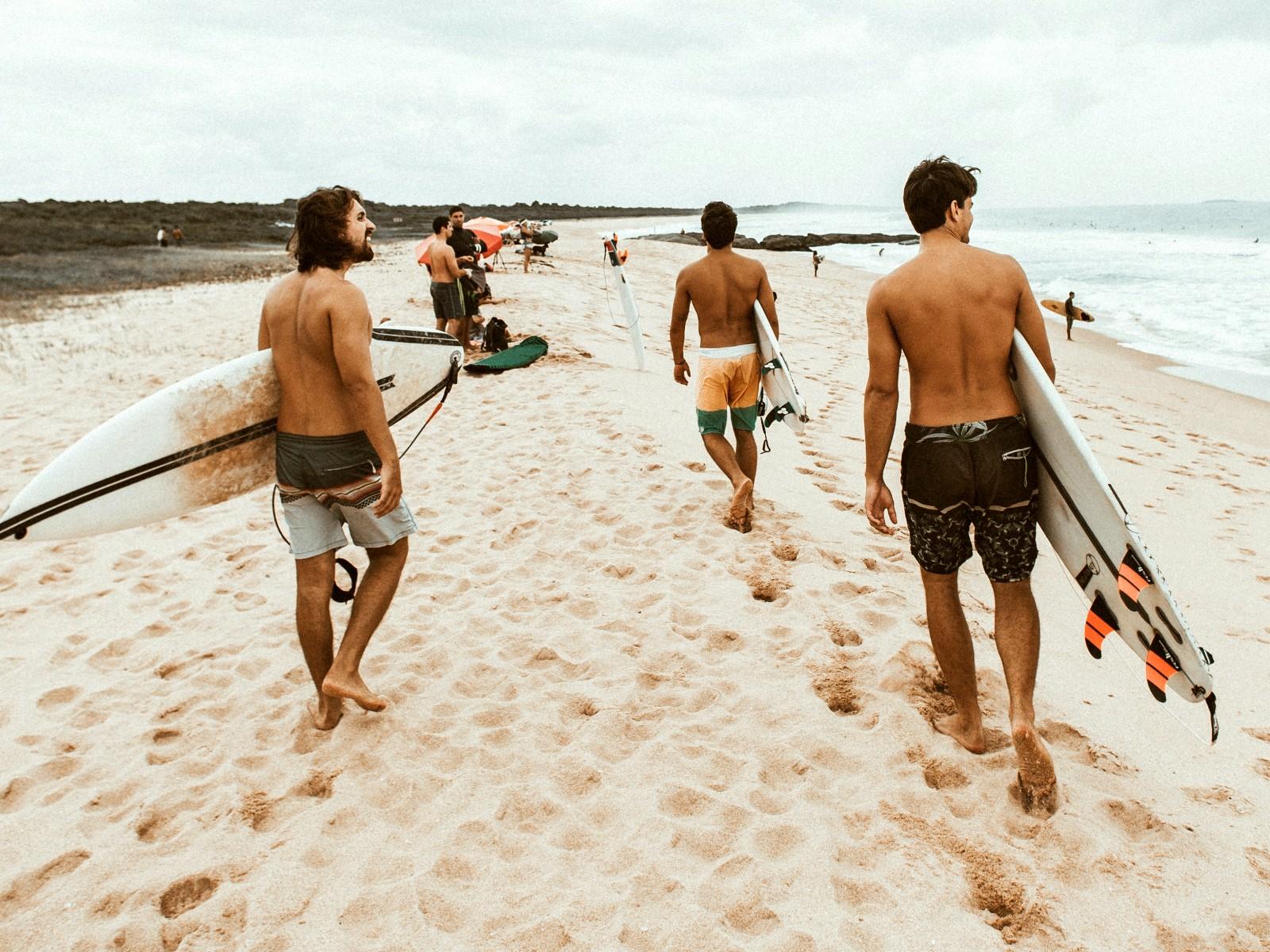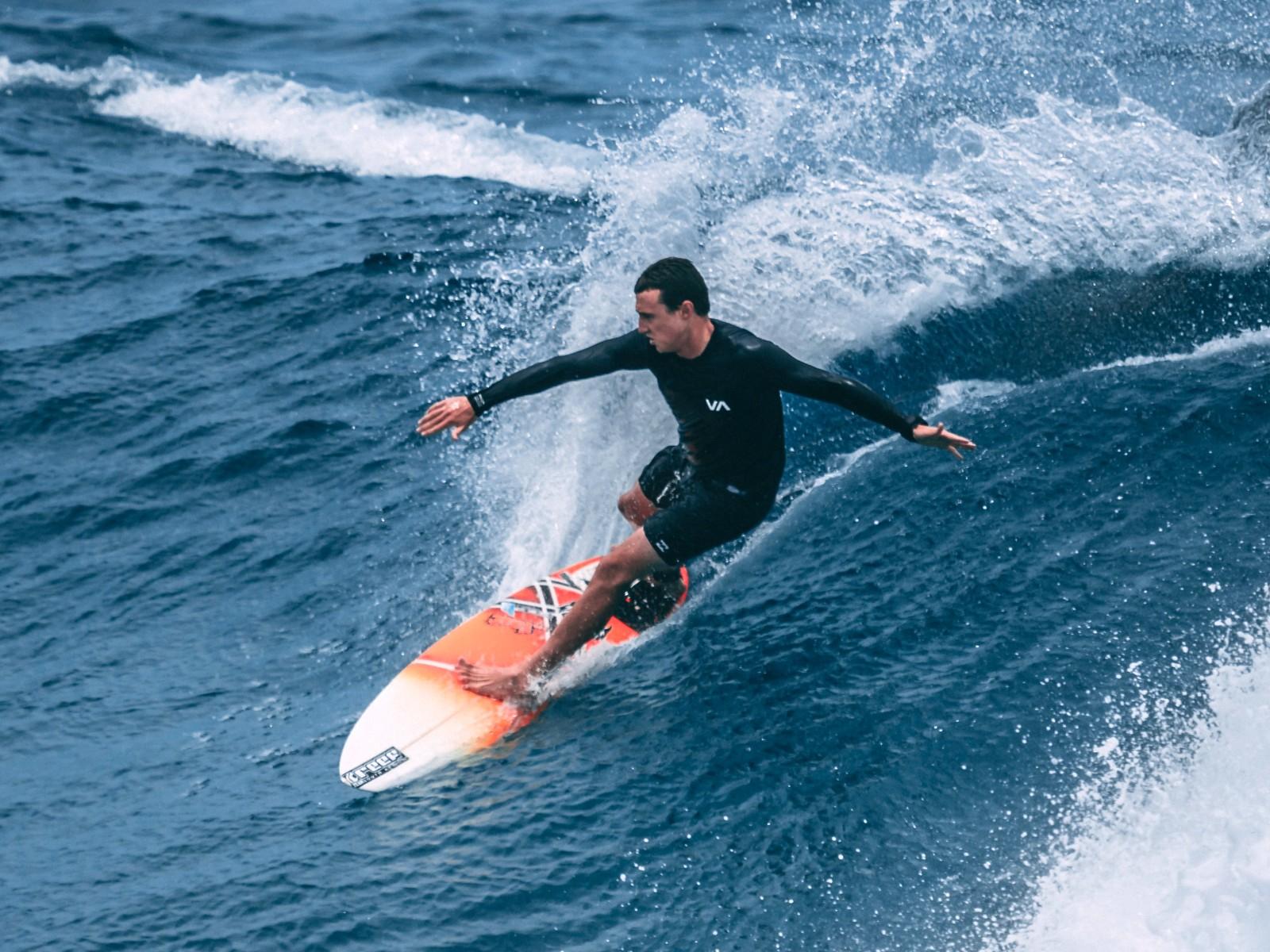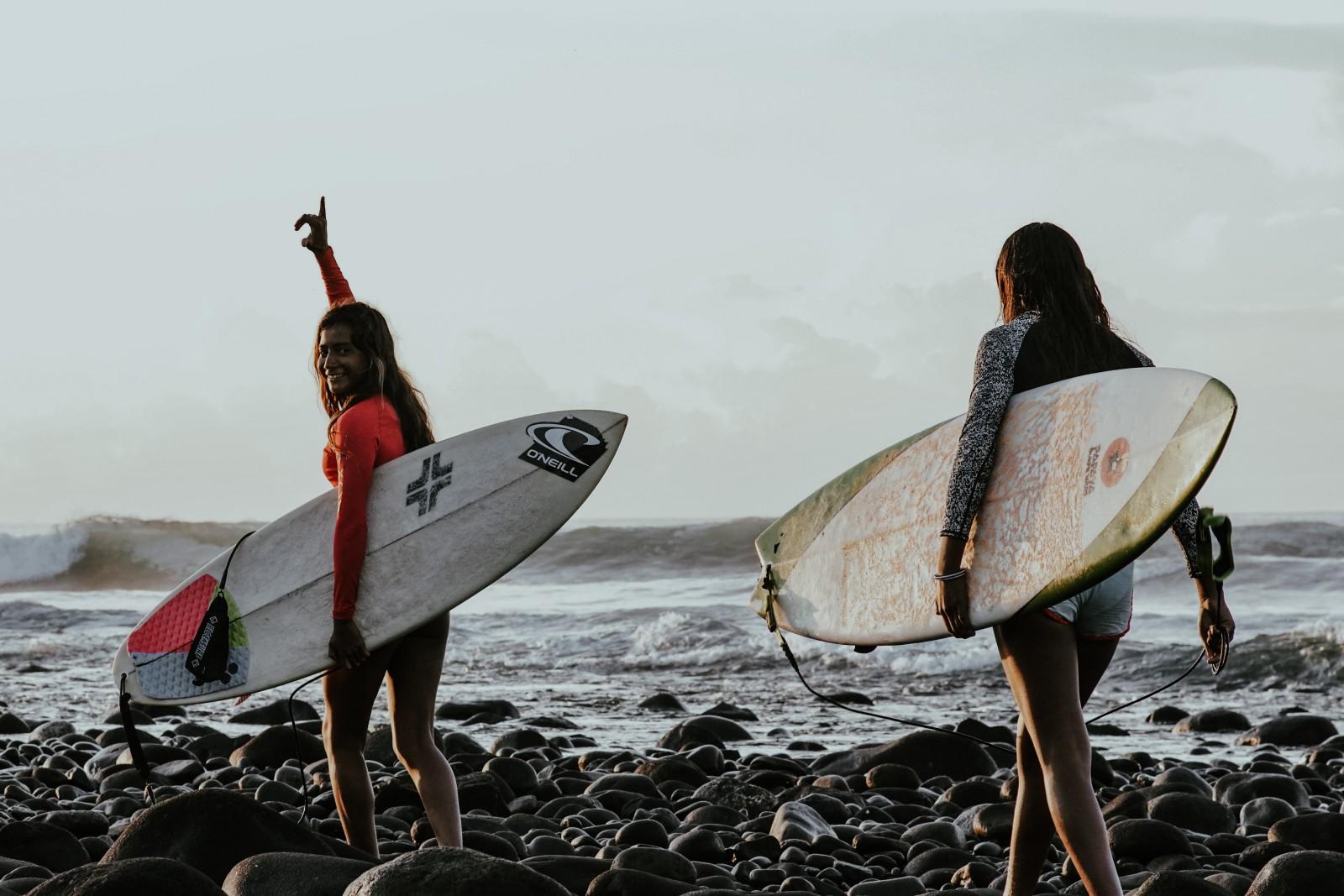
How to surf. A brief instructions on learning this challenging but so beautiful sport
Surfing is a very beautiful, but, let's be honest, somewhat challenging water sport. It requires an understanding of some specific skills and techniques before you go into the ocean or sea with a board for the first time. But if you take enough time to prepare on land, you can expect to have a more successful first try or session with a surfing coach in an open water. In this brief instructions, we'll explain you how to surf in five major steps.
Step 1. Learn to swim, if you don't already know how to
Do you need to know how to swim to surf? The answer is "yes". Or course.
No matter how experienced a surfer you are, you will wipeout out. And when you do, you may find yourself in hostile waters, struggling to stay afloat. That’s why knowing how to swim is a necessity when surfing.
You can’t always rely on your surfboard to keep you afloat; a surfboard can easily get washed away by a wave, even with a leash, which you might also have to ditch if it gets caught on rocks or other underwater obstructions.
If you don’t know how to swim, it is going to be much harder to make your way back to shore, particularly if you’ve been pulled out by a riptide. And, paddling — a key surfing technique — is a natural extension of the basic movements used in swimming. Trying to learn to paddle without knowing how to swim first is guaranteed to test your patience.
So, long story short? For your safety and peace of mind, conquer the pool before you conquer the ocean.
But even if you can swim, it does not mean that you swim well and feel confident in the water, especially among the big waves in the sea or an ocean. So it's never a waste of time to learn how to swim better anyway.

Lucija Ros / Unsplash
Step 2. Get into good sportive surfing shape
Does surfing require good physical fitness? Again, the answer is "yes".
Surfing is — first and foremost — a sport — and a physically demanding one at that. That means that one of the best ways to prepare for the water is to get into the proper shape on land. And that doesn’t mean just spending a day at your local swimming pool. Surfing requires a combination of balance, strength, and cardiovascular endurance. Here are just a few ways you can get into surfing shape:
Cardiovascular endurance training
Swimming is an excellent, low impact, full-body workout that will help get your heart in peak condition. This aerobic endurance will pay off when you have to quickly paddle to catch an incoming wave.
However, if you really want to have an edge when it comes to surfing, you’ll need to tailor your regular swimming routine. Next time you’re in the pool practicing your front stroke, try limiting the use of your legs. This more accurately mimics the swimming motion of paddling. It’s also a good idea to incorporate some high-interval training. That’s because surfing consists of periods of relaxed paddling and periods of furious paddling when you have minimal time to make it to an incoming wave.
Strength training
Surfing is a full-body workout that engages nearly all of your muscles. Your upper body muscles will work the hardest — chest, triceps, back, and shoulders. Fortunately, there are plenty of bodyweight-only exercises you can do at home to strengthen these muscles.
One of the best bodyweight exercises is the standard push-up — an exercise that works the chest and arms. Push-ups are also great because they mimic the “pop-up” motion you’ll be making in the water when you transition from lying on your surfboard to standing up.
When you’re ready for an extra challenge, move from a standard push-up to a clap push-up: give yourself an explosive push on the way up and clap before returning to your starting position.
Other exercises are lunges, squats, and pull-ups.
Last but not least, don’t forget about your core. A strong core is essential for maintaining your stability on the board against the strong pull of the wave. There are countless exercises for your core, but one of the best is the plank. You can start with a standard forearm plank before moving on to more difficult variations.
Balance training
Standing upright while riding a wave requires an incredibly strong sense of balance. The easiest way to practice your balance is by purchasing some type of balance and taking a few minutes to practice each day. Many surfers like using an Indo board, which also can be used for squats and push-ups.
If you don’t have a board, though, don’t fret! Many different bodyweight exercises contain a balance component. And, of course, you can always do a little yoga.

Jonathan Borba / Unsplash
Step 3. Practice surfing by watching, reading and asking
What is a must-read about surfing before you go out in the ocean? Here we have a counter question: do you know the saying that good writers are good readers? The same goes for surfing. Before stepping onto the board, take time studying other surfers in the water. All you need is a spot on the beach. Try to examine the surfers’ stance, how they stand up, how they’re turning.
It’s an easy way to pick up some tips and tricks before ever stepping foot on the board. For example, if you see that those successfully riding waves have their knees bent, you know you’ll need to bend your knees too.
The second way to practice surfing is to read tips from other surfers on how to master the sport and become better at it. There are a lot of such tips on the Internet from the experienced and even famous surfers. For example, perhaps Russia's main surfer, Seva Shulgin, says: "Fear in surfing is normal. You need to try if you want to grow" His tips he shared with us in this blog.
A third way is to ask for advice from the surfers community when you get up the courage. You can do this directly at the beach, at a local club, in a social networking group or forum, or in chats on surf spots in the Windy.app application.

Sebastian Staines / Unsplash
Step 4. Book your first surfing lesson with an instructor
Can you learn surfing by yourself? Theoretically, you could attempt to learn by reading more articles, watching videos, and/or talking to friends. But that puts you at risk of picking up bad habits — habits that will have to be broken once you start to progress.
So, now, when you're finally ready to head into the ocean, it’s time to book your first surfing lesson. Taking at least one lesson is the easiest way to learn the basics of surfing quickly and accurately.
Surfing instructors are great because they will help you find the right waves to practice on and guide you through the process. Plus, purchasing a lesson is less expensive than you think — lessons lasting from one to two hours typically range from $25–100.
Here is a pair of a basic skills you’ll need to master before you catch that first wave:
- Paddling. It is rotating your arms in and out of the water to propel yourself forward. Think front stroke minus your legs. Paddling does take practice; you’ll need to find the best position for lying on your board. The goal is to minimize drag (resistance). Your back should be arched, with your head and nose out of the water. It’s important not to sit too far forward or too far back on the board. At your first surf lesson, your instructor will most likely have you practice paddling on land.
- Standing on the board / The pop-up. Before you ride your first wave, you’ll need to know how to properly stand on the board. Your arms will be extended and your knees bent, with either your right or left foot in front, depending on your preference. The “pop-up” is the actual transition from lying on your board to standing up right before you begin to ride the wave. For beginners, the process is usually arch upwards, drag the back foot forward, drag the front foot into position, and stand up.
How many lessons are needed depends entirely on the person. Once you have the basics down, the most effective way to get better is by practicing, which you can do on your own. As you progress and encounter skills you want to refine, like turning, or want to make a switch to a shorter board, you might find it’s time to book another lesson.

Eduardo Iraheta / Unsplash
Step 5. Stick with it, be patient and surf again and again
How long does it take you to get good at surfing? There is no definite answer to this final question. How fast you’ll progress and how long it will take for you to successfully ride that first wave also varies from person to person. Some might be able to stand up and ride a small wave for a few seconds by the end of their first two-hour lesson. For others, it might take several weeks or even a month.
So the answer may be: stick with it and be patient. Like any sport, the more you practice, the faster you’ll improve and the better you’ll be.
It’s also important to keep in mind that no two waves are the same, meaning that while one day you might feel like you’re on your way to becoming a pro, the next day you might have wipeout after wipeout. Waves and weather are always changing, and even the professionals have good and bad days. You should be prepared to fall… and fall some more. But don’t let that discourage you! Keep practicing — both on and off the water.
Learn more about how to read the surf / swell forecast in a special Windy.app presentation with examples and tips from professional surfers with many years of experience of riding the biggest and best waves on the planet.
Text: Windy.app team
Cover photo: Joppe Spaa / unsplash
You will also find useful
How to choose the right wetsuit for surfing
Latest News
Professional Weather App
Get a detailed online 10 day weather forecast, live worldwide wind map and local weather reports from the most accurate weather models.
Compare spot conditions, ask locals in the app chat, discover meteo lessons, and share your experience in our Windy.app Community.
Be sure with Windy.app.



